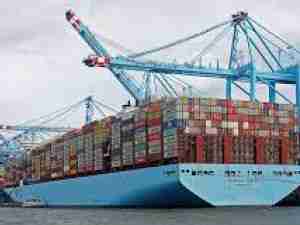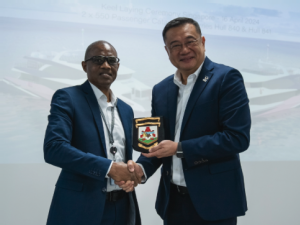Chertoff, who was accompanied by Rep. Jane Harman (D-Venice), met with Long Beach Mayor Bob Foster, Long Beach Vice Mayor Bonnie Lowenthal, Long Beach Councilwoman Suja Lowenthal and Port Executive Director Richard D. Steinke to discuss Port security issues and federal security funding and conduct a demonstration of the new radiation detectors.
'This is an important opportunity to meet with Secretary Chertoff,' Foster said. 'It gives us the chance to showcase some of the exciting new security technologies here at the Port of Long Beach, and also to voice our frustration at the lack of adequate security funding coming into this region from the federal government.'
Steinke said the visit by Chertoff, the highest-ranking security official in the US government, underscores the importance of the Port of Long Beach to international trade and the national economy. The Port, which moves more than $100 billion in cargo a year, supports more than 1.4 million jobs throughout the US and generates more than $5 billion in tax and revenue contributions a year.
'Given the Port of Long Beach's central place in the national economy, the federal government takes an active interest in what we're doing to improve security,' Steinke said.
Chertoff's visit to the Pier A facility, operated by SSAT ' Long Beach Terminal, LLC, highlighted a new security technology designed to improve radiation detection at cargo container terminals.
The Advanced Spectroscopic Portal (ASP) devices pinpoint radiation sources more precisely than the current generation of radiation monitors. While the current monitors are highly effective at finding radioactive materials, they also catch naturally occurring radiation found in cargo such as granite tiles and ceramics.
The ASP detection systems, after months of rigorous lab testing, are now being field-tested in terminal operations. Pier A is one of the first terminals in the nation to test the new system.
All international cargo terminals at the Port of Long Beach employ radiation portal monitors to scan cargo. According to the Department of Homeland Security, by the end of 2007 nearly all containers arriving at all US seaports will be scanned for radiation and nuclear devices.










